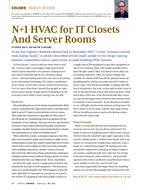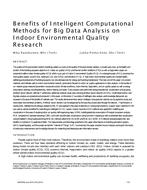The indoor air humidity of massive buildings is important for the preservation of the building and its valuable interior parts. Open air gas infrared heating, for example, produces a lot of vapor, which may lead to high indoor air relative humidities and condensation on cold exterior walls and glazing. Due to (air) heating under cold winter conditions, the relative humidity drops and this may lead to very low indoor air relative humidities for interior objects such as church organs, resulting in cracking of wooden parts and other problems of drying out. Humidification would be a solution, but it may lead to high relative humidities near cold exterior surfaces. A method was developed for a graphical representation of the near surface relative humidity by measuring the surface temperatures as a function of time by infrared thermography and simultaneously determining the mean vapor pressure of the air. From these measurements, mold germination on indoor surfaces can be predicted in an early state, making use of a representation in so-called hygrographic pictures.
Citation: Thermal Performance of Exterior Envelopes of Whole Buildings IX
Product Details
- Published:
- 2004
- Number of Pages:
- 12
- File Size:
- 1 file , 3.8 MB
- Product Code(s):
- D-BldgsIX84


